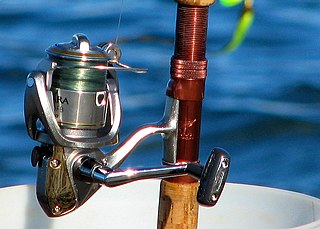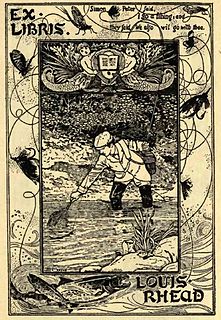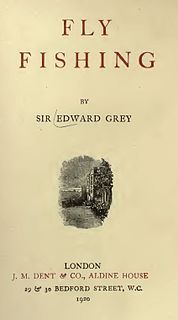Edward vom Hofe (1846–1920) was a New York fishing equipment entrepreneur of the late 1800s. He introduced his first two fly reels, starting his own business in 1867. Vom Hofe had become famous for his precision salt-water big-game bait and casting reels constructed of nickel silver and hard rubber (ebonite), along with recently discovered metal named aluminum. Vom Hofe was a machinist, fishing-tackle builder and noted big-game angler who outfitted the famous anglers of his generation.

New York is a state in the Northeastern United States. New York was one of the original Thirteen Colonies that formed the United States. With an estimated 19.54 million residents in 2018, it is the fourth most populous state. To distinguish the state from the city in the state with the same name, it is sometimes called New York State.

Ebonite is a brand name for very hard rubber first obtained by vulcanizing natural rubber for prolonged periods. Besides natural rubber, Ebonite contains about 25–80% sulfur and linseed oil. Its name comes from its intended use as an artificial substitute for ebony wood.The material is known generically as hard rubber and has formerly been called vulcanite, although that name now refers to the mineral vulcanite.

Angling is a method of fishing by means of an "angle". The hook is usually attached to a fishing line and the line is often attached to a fishing rod. Modern fishing rods are usually fitted with a fishing reel that functions as a mechanism for storing, retrieving and paying out the line. Tenkara fishing and cane pole fishing are two techniques that do not use a reel. The hook itself can be dressed with bait, but sometimes a lure, with hooks attached to it, is used in place of a hook and bait. A bite indicator such as a float, and a weight or sinker are sometimes used.
The handmade fly reels, both named "The Edward vom Hofe Celebrated Trout and Bass Fly Reel", are still generally considered by anglers and collectors around the world as among the very best fly reels ever made. The salmon-size versions of these reels followed soon afterwards.
The first of these trout reels, the #355, a reel with a two-tone clicker mechanism system, that can be activated as additional drag force, with a patent date of 1883, was joined around 1896 by the model #360, equipped with an "adjustable, automatic silent tension drag" system. To distinguish the two different models, later versions of the #355 were designated as the "Peerless" and #360 became the "Perfection." Only 2 direct successors of vom Hofe (Otto Zwarg and the Walker workshop) used the vom Hofe drag system in salmon reels, but not in trout reels. Joe Jancurias of Rochester, NY was the first maker, who made new Edward vom Hofe flyreels. For the 150th anniversary of the Orvis fishing tackle company, he made a limited set of "Perfection" models. Joe Jancurias died in 2011. There were former attempts preceding the Orvis Anniversary edition made by Joe Jancurias, but those failed in achieving the respected and acknowledged esthetics, for example in using the same size screws for 2 different sizes of reels for matters of economy. The size of the drag adjusting wheel was also out of proportion for the smaller size since the same diameter was used for both sizes, for economic reasons. Also the geometry of the handle had not been reproduced accordingly following the original vom Hofe formula and so leaving these attempts easily recognizable and discernible. In 2005, Edward vom Hofe was posthumously inducted into the International Game Fish Association Hall of Fame.

Fishing is the activity of trying to catch fish. Fish are normally caught in the wild. Techniques for catching fish include hand gathering, spearing, netting, angling and trapping. “Fishing” may include catching aquatic animals other than fish, such as molluscs, cephalopods, crustaceans, and echinoderms. The term is not normally applied to catching farmed fish, or to aquatic mammals, such as whales where the term whaling is more appropriate. In addition to being caught to be eaten, fish are caught as recreational pastimes. Fishing tournaments are held, and caught fish are sometimes kept as preserved or living trophies. When bioblitzes occur, fish are typically caught, identified, and then released.

A fishing reel is a cylindrical device attached to a fishing rod used in winding and stowing line.

Fly fishing is an angling method in which an artificial "fly" is used to catch fish. The fly is cast using a fly rod, reel, and specialized weighted line. Casting a nearly weightless fly or "lure" requires casting techniques significantly different from other forms of casting. Fly fishermen use hand tied flies that resemble natural invertebrates, baitfish, other food organisms, or "lures" to provoke the fish to strike.

Recreational fishing, also called sport fishing, is fishing for pleasure or competition. It can be contrasted with commercial fishing, which is fishing for profit, or subsistence fishing, which is fishing for survival.
Orvis is a family-owned retail and mail-order business specializing in high-end fly fishing, hunting and sporting goods. Founded in Manchester, Vermont, in 1856 by Charles F. Orvis to sell fishing tackle, it is the oldest mail-order retailer in the United States.

Game fish are fish pursued by recreational anglers. They can be freshwater or saltwater fish. Game fish can be eaten after being caught. Some game fish are also targeted commercially, particularly salmon.

Fly tying is the process of producing an artificial fly used by fly fishing anglers to catch fish.
A downrigger is a device used while fishing using the trolling method, which places a lure at the desired depth. A downrigger consists of a three to six-foot horizontal pole which supports a cannonball, generally 10 to 15 pounds, by a steel cable. A clip, also known as a "release" attaches a fishing line to the cannonball weight. The bait or lure is attached to the release.

Fishing tackle is the equipment used by anglers when fishing. Almost any equipment or gear used for fishing can be called fishing tackle. Some examples are hooks, lines, sinkers, floats, rods, reels, baits, lures, spears, nets, gaffs, traps, waders and tackle boxes.

In the United Kingdom and Ireland coarse fishing refers to angling for freshwater fish which are traditionally considered undesirable as a food or game fish. Freshwater game fish are all salmonids—most particularly salmon, trout and char—so generally coarse fish, also known as rough fish, are freshwater fish that are not salmonids. There is disagreement over whether grayling should be classified as a game fish or a coarse fish.

This general annotated bibliography page provides an overview of notable and not so notable works in the English language regarding the sport of fly fishing, listed by year of first publication. Although not all the listed books are devoted exclusively to fly fishing, all these titles contain significant fly fishing content. The focus of the present page is on classic general texts on fly fishing and its history, together with notable public or university library collections dedicated to fly fishing.

Fishing is the practice of catching fish. It is a prehistoric practice dating back at least 40,000 years. Since the 16th century, fishing vessels have been able to cross oceans in pursuit of fish, and since the 19th century it has been possible to use larger vessels and in some cases process the fish on board. Fish are normally caught in the wild. Techniques for catching fish include hand gathering, spearing, netting, angling and trapping.
Fly fishing tackle comprises the fishing tackle or equipment typically used by fly anglers. Fly fishing tackle includes:
This page is a list of fishing topics.

Favorite Flies and Their Histories - With many replies from practical anglers to inquiries concerning how, when and where to use them-Illustrated by Thirty-two colored plates of flies, six engravings of natural insects and eight reproductions of photographs is a fly fishing book written by Mary Orvis Marbury published in Boston in April 1892 by Houghton Mifflin. It was considered by most fly fishers as the standard reference on flies in its era.

Blacker's Art of Fly Making - comprising angling and dyeing of colours with engravings of Salmon and Trout flies shewing the process of the gentle craft as taught in the pages with descriptions of flies for the season of the year as they come out on the water is a work of fly tying literature with significant fly fishing content written by William Blacker, a London tackle dealer and first published in London in 1842 by George Nichols. The 1842 and 1843 editions were only 48 pages while, the 1855 edition was considerably expanded by Blacker with hand-painted, colored illustrations and 252 pages.

The Royal Coachman is an artificial fly that has been tied as a wet fly, dry fly and streamer pattern. Today, the Royal Coachman and its variations are tied mostly as dry flies and fished floating on the water surface. It is a popular and widely used pattern for freshwater game fish, particularly trout and grayling. Large streamer versions are also used for winter steelhead and Atlantic salmon.

Fly Fishing, first published in 1899 by English author and diplomat Edward Grey, 1st Viscount Grey of Fallodon (1862–1933), is a book about fly fishing English chalk streams and spate rivers for trout and salmon. It includes reminisces about the author's fly fishing experiences on Hamptonshire rivers. The book was in print for nearly 50 years and has been extensively reprinted in the 21st century.
Stanley E. Bogdan was the founder of S.E. Custom Built, a company dedicated to the handmade construction of fly reels. Bogdan was born in Nashua, NH and lived there throughout his entire life. He became interested in fly fishing at an early age when he began receiving outdated copies of a hunting and fishing magazine from a local sports retailer. At age 13, Bogdan was tying his own flies and would then become immersed in the sport. Upon graduating high school, Bogdan began work at Rollins Engine Company, a local engines manufacturer in Nashua. Later on, while working as a machinist, he began constructing some of the first prototypes for his reels. Stanley Bogdan died on March 27, 2011 and is survived by his son Stephen, and his daughter Cheryl Doughty. His wife Phyllis died in 1995. While standing on the shore of one of his favorite rivers; The Grand Cascapedia, Mr Bogdan smiled and said: "I'd die if I could not fish anymore" shortly after Mr. Bogdan could no longer fish he succumbed to pancreatic cancer. 2009

Arthur Victor Oglesby was a British writer, photographer, filmmaker, broadcaster and fisherman. He was best known for his books on salmon fishing.

















